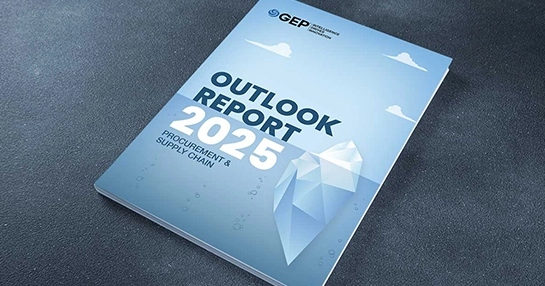
Is Retail Procurement Ready for Its Next Big Shift with AI?
- Early adopters of AI in supply chain and procurement are cutting logistics costs by 15% and inventory costs by 35%, says research.
- The biggest roadblocks to AI adoption in retail are data, culture, and structure.
- Change starts with people, clear goals, and one integrated system.
November 04, 2025 | Procurement Strategy 4 minutes read
Retail has always moved fast. Trends change overnight. Suppliers shift by the season. And every dollar saved counts twice in a low-margin business. Yet many procurement teams still work as if they have time to spare.
New research from Georgetown University shows that early adopters of AI in supply chain and procurement are already seeing results: 15% lower logistics costs, 35% leaner inventory, and service levels up by 65%. Those numbers aren’t from new tech alone — they’re from better coordination and smarter planning.
Retail procurement leaders know they can’t keep adding tools and calling it transformation. What they need now is connected data, quicker decision cycles, and systems that make the routine invisible so people can focus on strategy. That’s the real turning point.
What Autonomous Agents Can Do in Retail
AI agents can automate complex tasks and optimize procurement strategies. They can act as intelligent assets within workflows, automating sourcing, spend analysis, and supplier assessment. Equipped with natural language processing, machine learning, and robotic process automation, these agents reduce the need for human oversight on repetitive, high-frequency tasks.
Along with automating tasks, AI agents are also capable of self-learning. They adapt based on new data and changing conditions, which enhances their efficiency and decision-making capabilities without human intervention.
Why Progress Feels Slower Than It Should
The technology is there. The people are too. What’s missing is alignment.
When retailers try to modernize procurement, they first have to deal with resistance inside the team. People worry about job security or losing control.
Retail leaders like Walmart and Macy’s learned the hard way and addressed it upfront. They ran change management programs that showed teams how automation simplifies work rather than replaces it. When people saw proof in the form of fewer errors, faster approvals, and clearer roles, their trust started building.
Then there’s the data problem.
Procurement information lives everywhere: supplier lists in one system, spend data in another, and performance metrics in spreadsheets. Best Buy tackled this by setting up a single, clean data lake. It sounds technical, but it’s really about confidence. You can’t make good decisions when half your data doesn’t match.
Until those two issues — culture and data — are fixed, no digital project truly scales.
Discover More: AI-driven procurement platforms
What Smarter Procurement Looks Like
Modern procurement isn’t about robots buying stock. It’s about freeing people from repetitive work so they can plan ahead.
Here’s what that looks like in retail:
- Better market awareness. Teams track price shifts in real time instead of reacting after costs rise.
- Simpler buying routines. Systems handle repeat orders and inventory checks automatically, allowing staff to focus on supplier relationships.
- Better supplier conversations. With reliable performance data on hand, negotiations with suppliers become faster and fairer.
- Built-in compliance. Monitoring happens quietly in the background, catching issues before they become risks.
- More accurate demand planning. Stores get what they need when they need it, without facing months of overstock or empty shelves.
How to Get There, Without Chaos
Here is an outline of a simple but practical roadmap for retailers ready to move:
- Set clear goals. Define measurable, outcome-focused objectives for deploying agents. Pick two or three outcomes that matter most — faster sourcing, fewer errors, or cleaner spend data.
- Fix the data. Conduct a thorough data audit. Clean existing data to ensure agents use accurate information.
- Bring teams together. Procurement, finance, IT, and operations need one plan, not four. So, it’s important to bring them all together.
- Start small. Pilot a single process, such as spend analytics, and evaluate performance against procurement targets.
- Measure and refine. Expand the program to additional functions, track results and adjust. Every improvement builds confidence.
- Train continuously. Give teams practical skills to work with digital tools, not just presentations about them.
Retail leaders who follow this approach find that transformation becomes less about “tech rollout” and more about how people align and work together.
The Agentic AI Playbook for Procurement Pros
How to Move from Hype to Action and Results
The Competitive Edge Is Closer Than It Looks
Procurement is no longer just about cutting costs. It’s about building an agile and responsive business that is ready for the next supply crunch, policy change, or customer shift.
Retailers that connect their data and teams are already moving faster, negotiating smarter, and protecting margins when conditions change. Those who wait risk running a 2025 business on a 2015 operating model.
The takeaway? You don’t need the newest system to win. Instead, you need one that talks to the rest of your business.



